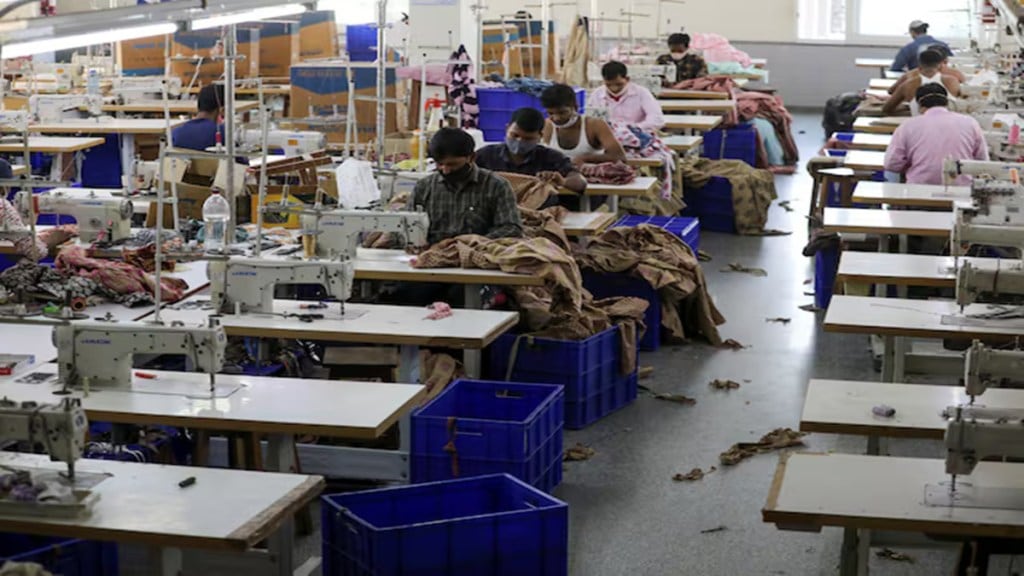By Nagesh Kumar
The Budget 2025-26 will be presented against the backdrop of a marked slowdown of the Indian economy in Q2 of 2024-25 to a seven-quarter low of 5.4%, leading to a downgrading of the gross domestic product (GDP) growth forecasts for 2024-25 from around 7% earlier to around 6.5%. The ongoing geopolitical conflicts and expected upheavals of Trump 2.0 trade policy create further uncertainties for already stagnant exports and reduced inflows of foreign direct investment (FDI).
The slowdown is largely due to the deceleration of the manufacturing sector from 7.0% to 2.2%. Agriculture growth actually improved from 2.0% to 3.5% in Q2, and the services sector continued a robust 7.1% growth. The slowdown of industrial activity has affected the employment sentiment.
The manufacturing slowdown can be traced to trends in consumption, investment, and exports. While government consumption has come out of an elections-related squeeze of -0.2% in Q1 to a 4.4% growth in Q2, the growth of private consumption expenditure has moderated from 7.4% in Q1 to 6.0% in Q2. The fixed investment growth has declined from 7.5% in Q1 to 5.4% in Q2. India’s merchandise exports during April-December 2024 grew at a very marginal rate of 1.6% to $321.71 billion.
Therefore, the finance minister’s key priority would be to revive the growth rate of the economy by building on the momentum in the government capex that she started in the 2023-24. Even though actual delivery of the budgeted capex has fallen short due to institutional capacity and elections-related code of conduct, higher budgetary allocations for infrastructure development would help to crowd in private investment.
The Budget should bolster growth engines not only to revive the growth rate but also accelerate it from 6-7% to the 7-8% range in the medium term. The criticality of decent job creation demands that these engines focus on accelerating the manufacturing sector, particularly the labour-intensive industries.
Despite India’s natural advantage in labour-intensive sectors, Indian-made goods are increasingly giving way to imported ones as evident from shopping malls which are full of goods that are not made in India — be it garments, artificial flowers, glassware, crockery, plastic ware, furniture, and decorative items, among other household goods, often sold under Indian brand names. These rather simple technology products have been made by Indian micro, small, and medium enterprises (MSMEs) and larger firms for decades. The July 2024 Budget extended the production-linked incentives (PLI) to two labour-intensive sectors, namely leather and toys, beyond the 14 sunrise sectors that were already covered. It is time to focus attention on apparel or ready-made garments.
Why the apparel sector? Not only because apparel is among the highest employment-generating sectors, but also because India has the best chance of succeeding here. India has the advantage of a full value chain, right from growing cotton to yarn to fabrics to garments in the country, besides the cost of labour. Yet India fares poorly among the top exporters of apparel with $18 billion worth of exports and a marginal 3.6% share of the global market in 2022. China exported more than 10 times at $182 billion, Bangladesh’s exports were worth $45 billion, and Vietnam $35 billion. The ongoing restructuring of global corporations focusing on diversification on a China+1 basis, particularly in the context of the expected high Trump tariffs on Chinese exports (and in the context of Bangladesh facing political uncertainties), may offer a great opportunity to India.
Different studies, including the India Industrial Development Report 2024-25 prepared by the Institute for Studies in Industrial Development, have pointed to the small scales of operations in India being suboptimal for the poor performance in the apparel sector. This Budget may consider extending PLI, among other incentives, to push large business houses to foster garment exports in a big way. Many large business houses, including Aditya Birla Group, Tatas, Reliance, and Raymonds, have been active in garment retail (often outsourced from Chinese manufacturers). They need to be pushed to not only localise garment manufacturing within the country for local and export markets, but also leverage their global alliances to create jobs and incomes. If some incentivisation like PLI helps, it would be worthwhile.
The Budget could also address the larger issue of dumping of manufactured goods from labour-intensive consumer goods to intermediate goods such as steel and machinery from China. To become the “factory of the world”, China has built huge capacities for production of all manufactured goods. However, the rising protectionist backlash has affected the ability of China to export them to advanced economies. Hence, dumping their goods in India’s fast-growing markets, with the expanding middle class becoming an easy target, is a convenient option. Nikkei Asia reported that dumping from China in Southeast Asia had led to the closure of over 2,500 factories in Thailand alone in the past year, forcing the government to take steps to protect the local industry.
The threat of dumping to destroy the local industry, especially the MSMEs and millions of jobs, is real. The government needs to act not only to protect these industries but also to foster them to create more jobs, taking advantage of growing demand. The Budget could initiate action in that direction.
The writer is Director, Institute for Studies in Industrial Development.
Disclaimer: Views expressed are personal and do not reflect the official position or policy of FinancialExpress.com. Reproducing this content without permission is prohibited.

